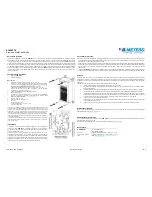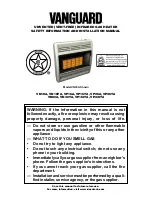
H I G H P R E S S U R E P O R T A B L E F O R C E D A I R H E A T E R S E R V I C E M A N U A L
16
C. Cracked spark plug
Follow steps under DEFECTIVE TRANS-
FORMER, procedure “B” on page 15, to test
for spark at spark plug electrodes. If spark is
seen at any place on the spark plug other
than the electrodes, the porcelain insulator is
cracked. Replace spark plug.
D. Incorrect fuel pump pressure
Follow steps under INCORRECT FUEL PUMP
PRESSURE, procedure “C” on page 13.
E. Defective fuel solenoid valve
1. Remove upper shell of heater.
2. Check for fuel flow to nozzle. Do this by
turning thermostat knob to warmest posi-
tion and connecting heater to electrical
supply. With motor running, look through
air openings on rear of combustion cham-
ber. See if nozzle is spraying out fuel. If
nozzle is spraying out fuel, solenoid valve
is working properly. If nozzle is not spray-
ing out fuel, unplug heater and follow
steps below to determine if solenoid valve
is defective.
3. Disconnect yellow and white wires from
solenoid valve.
4. Set ohmmeter on the 250VAC position.
5. Connect ohmmeter test leads to yellow
and white wires that were connected to
solenoid valve.
6. Connect heater to electrical supply. If
120VAC is being sent to solenoid valve
and fuel pump pressure is correct, the
solenoid valve is defective. Replace de-
fective solenoid valve.
Figure 21 - Checking Fuel Solenoid Valve
!
WARNING ICON
G 001
WARNING
Before attempting this test procedure,
remove fan from motor and spark plug
wire from spark plug. This will prevent
injury from turning fan or accidental
ignition of fuel.
!
WARNING ICON
G 001
WARNING
Do not touch metal end of spark plug
wire while heater is running. Make sure
metal end of spark plug wire does not
touch any part of heater. Spark plug
wire produces high voltage. Electrical
shock will occur.









































